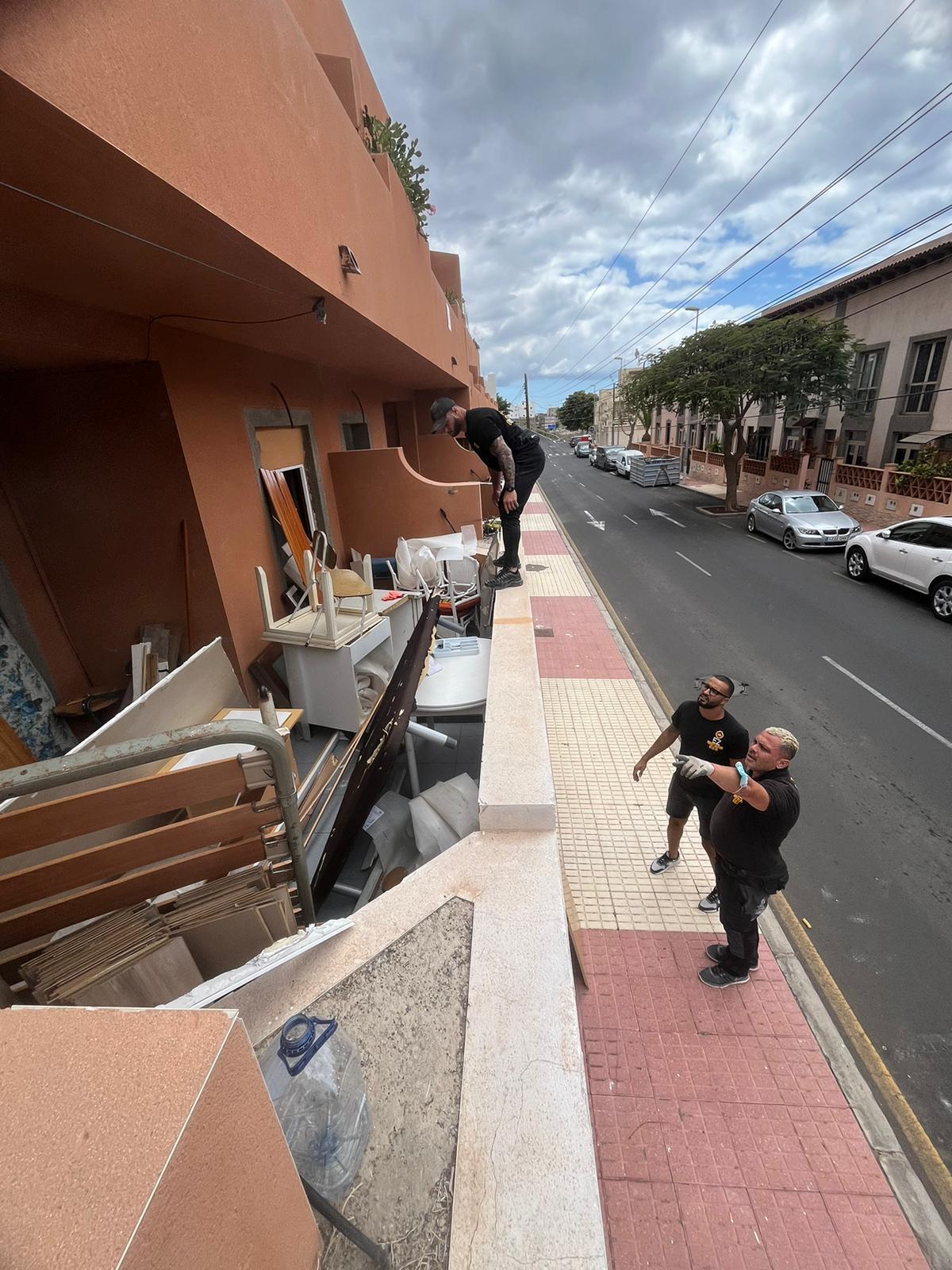The release of a 43-story building in Tojoco Bajo, in the municipality of Adeje, Tenerife, has uncovered a serious problem related to the housing crisis affecting the Canary Islands: the irregular practices of occupation mafias.
The spokesperson for the company that reached an agreement within less than 30 days with all the people who illegally occupied these houses, some for over 10 years, details: among the squatters there were individuals driving high-end cars – Mercedes, Audis – one had three motorcycles, and some were profiting from holiday rentals. Additionally, a significant number of the occupied houses were managed by mafias, organized groups that even requested 450 Euros for the rental.
The company dedicated to liberating occupied houses in the Canary Islands and returning them to their rightful owners already repaired is called Ezproperty Solutions. Established in Fuerteventura, it now operates across all the islands. They have posted a video on their Instagram profile showing the team involved in the operation in Tijoco Bajo on the rooftops and during the recovery and repair of the properties.
Their manager, Roberto Pérez, explains that “in less than a month, through negotiation, we managed to convince the people occupying these houses in Tijoco Bajo that they had to leave because they simply did not belong there.” “Some threatened us, one even with a knife. There wasn’t a single Canarian among the hundred or so people living there irregularly. In fact, we provided documentation for them to vacate the properties in five different languages,” emphasizes the Ezproperty Solutions spokesperson.
He also states that some of the individuals who took over these properties seemed to have a high standard of living, unusual for someone who occupies out of necessity. “There were high-end cars and powerful motorcycles in the garages, and some were making profits by offering the flats as holiday rentals. For example, a Russian had four of these properties that he offered for tourism,” he explains, adding: “In about ten cases, there were vulnerable people with limited resources, some with dependents. We offered them housing options. We are particularly concerned about cases involving children.”

The Ezproperty Solutions company is working on the repair of the homes in the recovered building in Tijoco Bajo. / El Día
Pérez emphasises that they are not exactly a de-occupation company. “We return properties to their rightful owners always through negotiation and ensure they are delivered in the best possible condition,” he highlights.
This is not the first complete building they have liberated. The list is growing after 15 years of experience in the real estate sector: a property with 44 homes in Tarajalejo (Fuerteventura), another with 22 in Playa del Inglés (Gran Canaria), one with 17 in San Isidro (Granadilla, Tenerife), and others with fewer houses throughout the Canary Islands.
This one in Tojoco Bajo, Adeje, was purchased while still occupied by the squatters, in July of last year, by investors who own a chain of supermarkets in Latvia. They paid around 1.3 million Euros for the 43 flats, plus garages and storage units.
The Tijoco Bajo building was purchased, still with the ‘squatters’ inside, by investors owning a supermarket chain in Latvia
“Once they proved that they had completed the purchase, they hired us, and now they will receive the building already repaired and ready to enter the legal market,” details Roberto Pérez.
These are the same investors who acquired another ‘occupied’ building in southern Tenerife, specifically a 16-story one in San Isidro, in the municipality of Granadilla de Abona. They paid around 700,000 Euros for it. It is one of the new assignments for Ezproperty Solutions, a company that now employs 19 people.
The issue of ‘occupation’ is particularly affecting the most touristic municipalities in Tenerife. Just consider the case of the 210 individuals from the 90 families occupying the 44 flats in the Chasna building, in Costa del Silencio (Arona), who were evacuated on March 12th by the decision of the Court of First Instance number 3 of Arona. In this instance, the majority of the individuals are in vulnerable situations.
The property, located at numbers 8 and 10 on Chasna street, is affected by structural weakness (aluminosis) and the risk of collapse, as stated in reports issued by the Municipal Urban Planning Office in 2021.
Two months later, some of these families are still living near the building in Arona, waiting for housing alternatives. They argue that it is impossible to find affordable housing, in a real estate market where rental options are diminishing and prices are skyrocketing.
These types of companies are increasingly being hired by Canarians to reclaim their properties due to the constant delays through the proper channels to achieve this.















